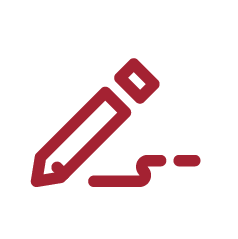2.1 What is a word?
As mentioned before, a phoneme is the minimal unit of utterances produced in order to communicate a message using a language system, that is, sounds within a language. Although it is a minimal unit, a phoneme does not lack importance. A single phoneme may usually lack of meaning, but a single phoneme can be the difference in meaning for words. This is what happens with minimal pairs.
Instrucción: Click on the card and slide it to the left to read the information.

Trying to define the concept of “word” is not easy. Actually, not even linguists have been able to define once and for all this term successfully. First of all, there are several ways to look at the concept of “word”. For example, a word can be defined as ‘a string of letters between two spaces or between a space and a punctuation mark.’ Obviously, this definition is only considering the written language, as it is not possible to identify these spaces when you speak.
A possible definition of “word” in the spoken language would be ‘a piece of speech which behaves as a unit of pronunciation, which contains only one main stress.’
In this case, the number of words equals the number of stresses in an utterance, and this represents another difficulty as to differentiate the concepts of “word” and “stress”.
In both cases, written and spoken, the definitions of “word” do not cover other possibilities and criteria that exist in the many different languages, which makes it even more difficult to come up with a general definition for this concept. For instance, some languages do not separate words with spaces in their written form, and others only accept certain sequences of vowels in a word in their spoken form.
Another example of a definition for this concept, which could apply in both spoken and written forms, can be ‘a word is a unit which carries a single simple meaning.’ But what about single words that have more than a single meaning? And what about single simple meanings that consist of a sequence of several orthographic words, such as phrasal verbs or compound nouns?
Probably the easiest way to deal with the concept of word is treating it as an orthographic form, and still, there are several difficulties when trying to identify words in these terms.
We could count every single string of letters as one word (tokens), or we could count words taking into account only the different strings of letters that there are (type). If we are considering “types”, then we have a second problem, as it would be necessary to establish if words like “take” and “took”, or “house” and houses”, are considered to be different words.
Clearly, it is difficult to establish a single definition for the concept “word”, but, apparently, most people consider the orthographic word as a token to deal with it.
LAS Activity 201. Type or token
Instructions
Answer the following questions.
a. How many words considered as tokens does the last sentence (or paragraph) in this section have?
(Clearly, it is...)
b. How many words considering types?
Very good! You are ready to continue.
Please, try to answer the exercise again.
Please, check the correct answers.
Check the correct answers
Tokens = 28 (Just as the Office word count would do it)
Clearly(1), it(2) is(3) difficult(4) to(5) establish(6) a(7) single(8) definition(9) for(10) the(11) concept(12) “word”(13), but(14), apparently(15), most(16) people(17) consider(18) the(19) orthographic(20) word(21) as(22) a(23) token(24) to (25) deal(26) with(27) it(28).
Types = 23 (‘it’, ‘the’, ‘word’, ‘a’ and ‘to’ are “the same” word, so they just count once. However, this way to count words is not that simple, because it could be argued that ‘it’ on the first line and ‘it’ on the last line are two different words, as the one on the first line is a subject, and the one on the last line is an object.)
Clearly(1), it(2) is(3) difficult(4) to(5) establish(6) a(7) single(8) definition(9) for(10) the(11) concept(12) “word”(13), but(14), apparently(15), most(16) people(17) consider(18) the(-) orthographic(19) word(-) as(20) a(-) token(21) to(-) deal(22) with(23) it(-).
